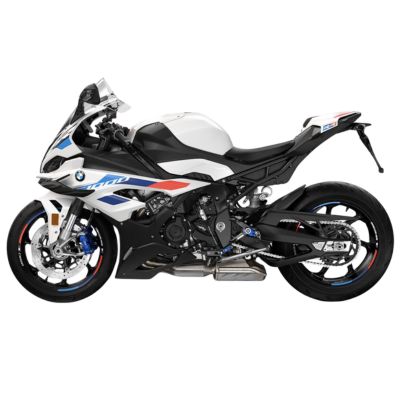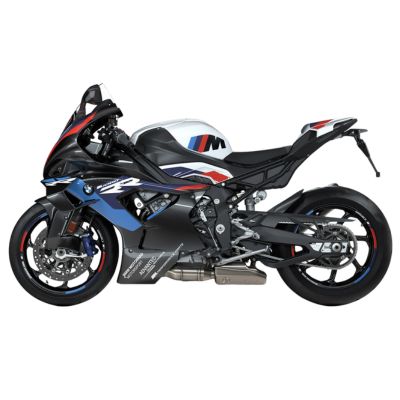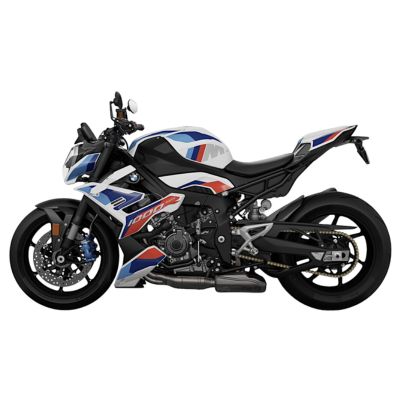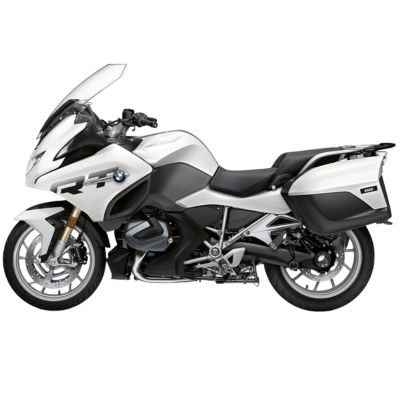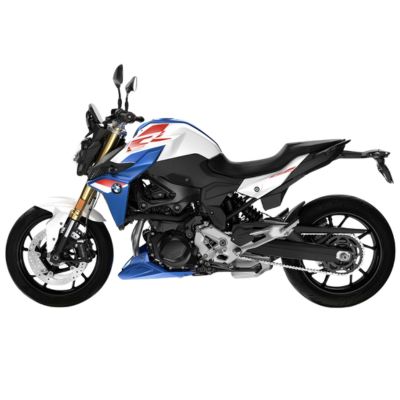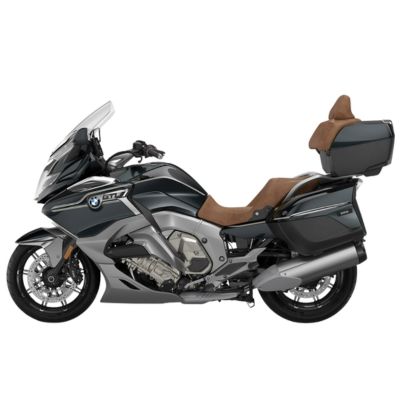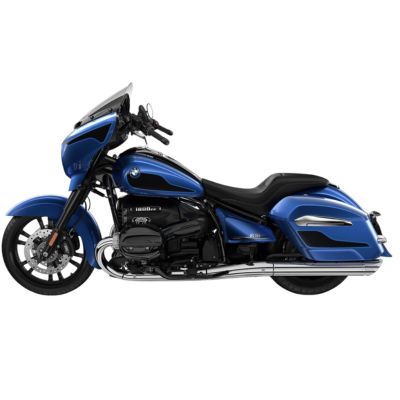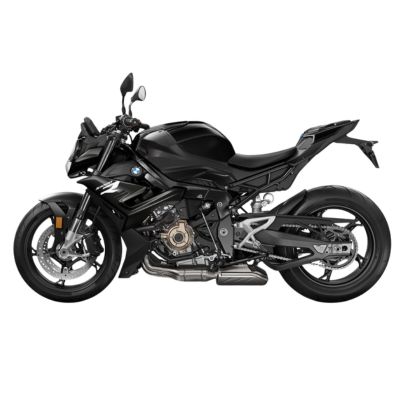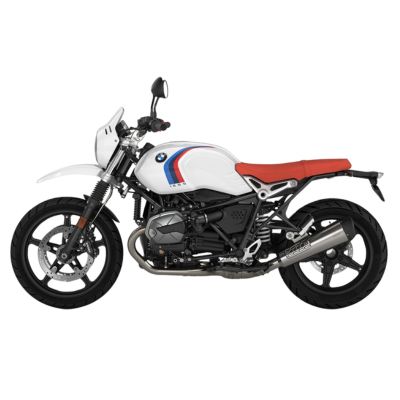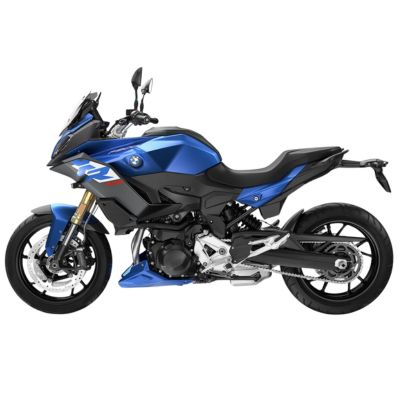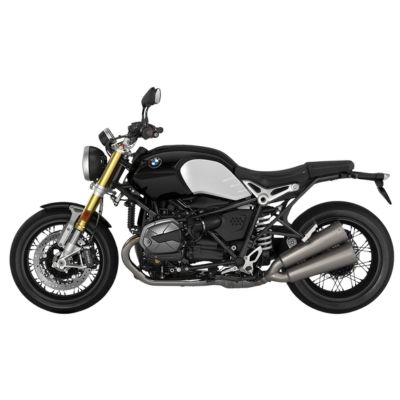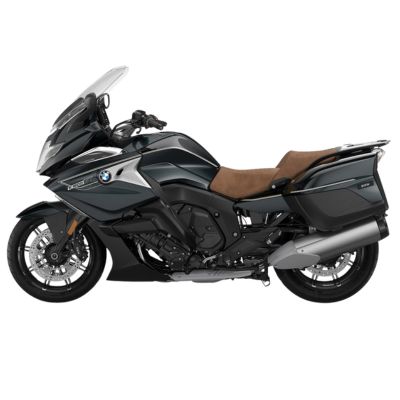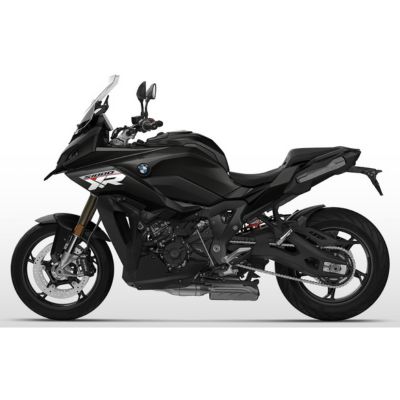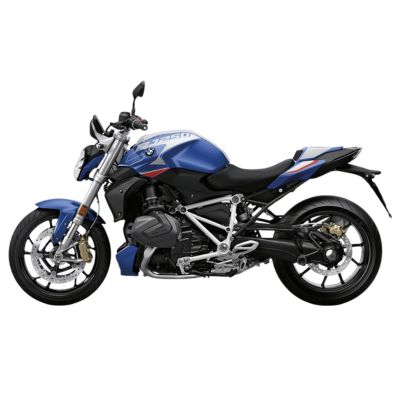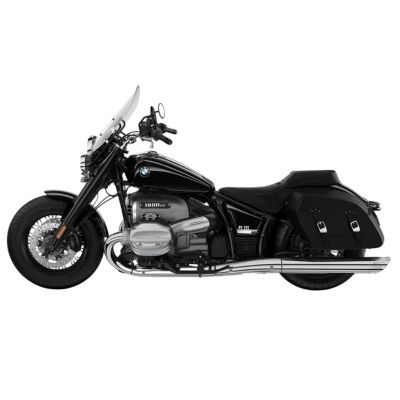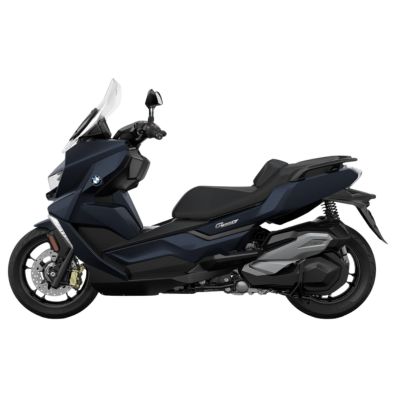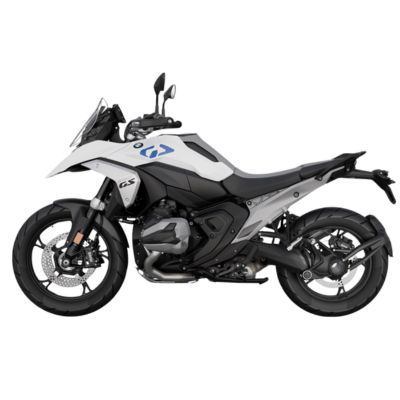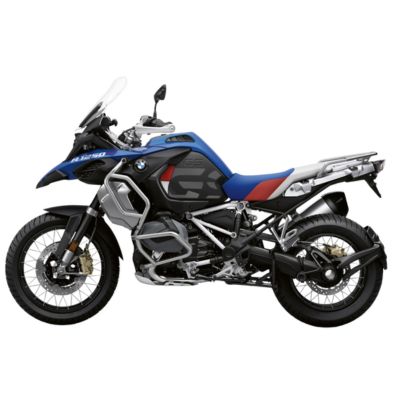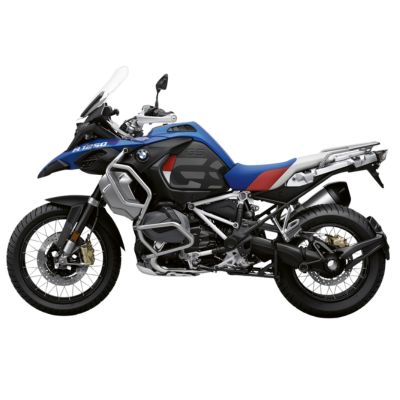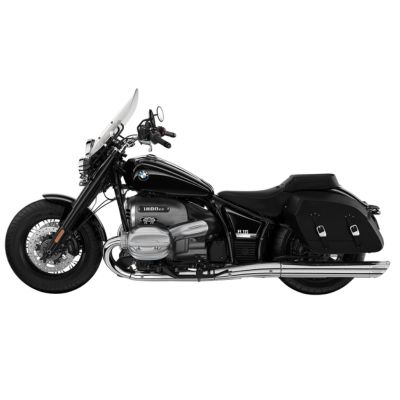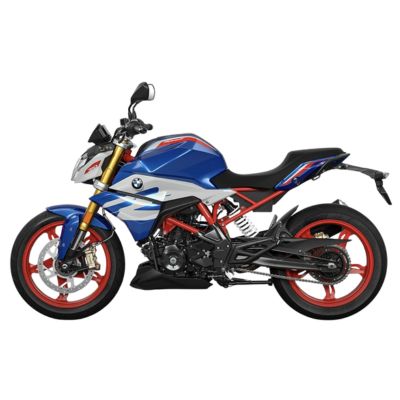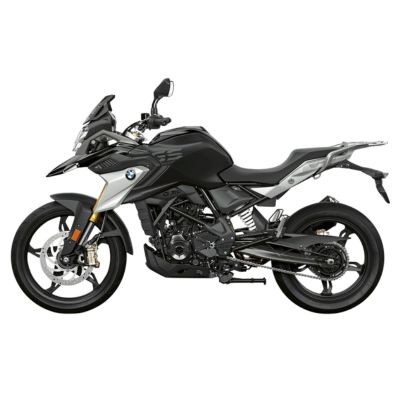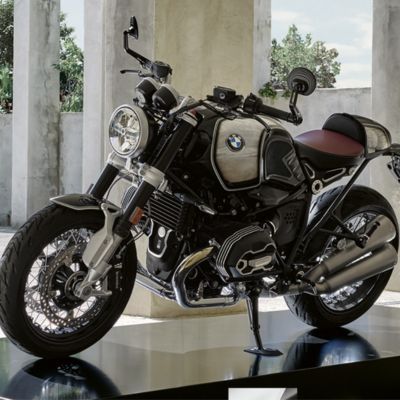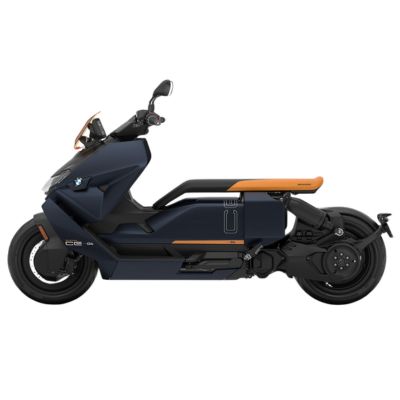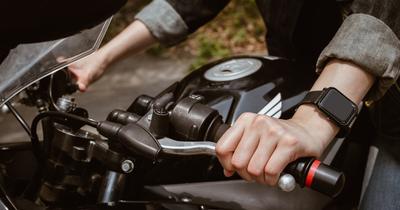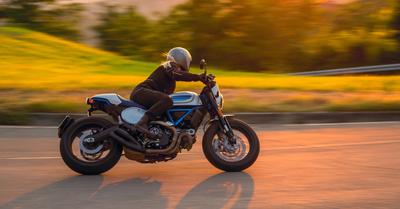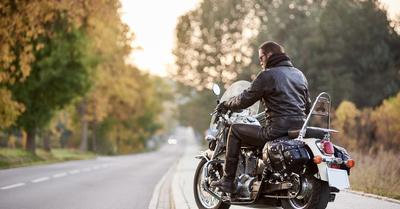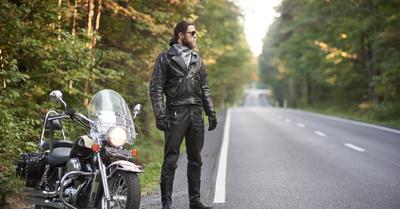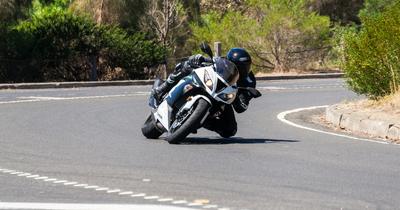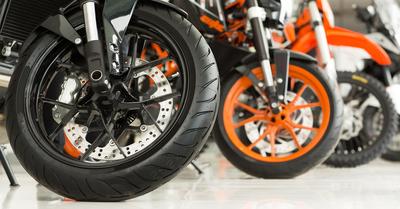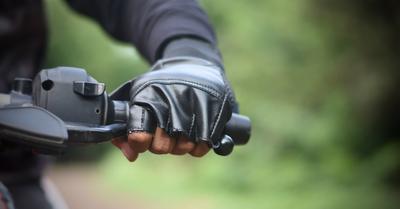List of All BMW Motorcycles
BMW Motorrad has established itself as a titan in the world of motorcycles, presenting an array of models that cater to different riders' preferences, from touring models and sport to heritage and urban mobility. Each motorcycle is a blend of the distinctive BMW design, advanced technology, and engineering excellence.
Exploring the diverse lineup, you'll discover machines engineered for speed and agility, like the BMW Sport S 1000 RR, and those crafted for comfortable long-distance touring, such as the BMW Tour K 1600 GTL.
The brand's commitment to innovation is evident in each model, all of which are built to navigate the complexities of urban streets or the demands of off-road challenges. The brand gives you self-confidence.
Here’s a table showing a list of all BMW motorcycle models.
1. BMW Sport S 1000 RR
BMW Sport S 1000 RR
In 2009, BMW presented the BMW S 1000 RR, which has continuously set the standard for superbikes within the consumer market and on the race track. With its highly tuned performance and advanced control features, this machine is engineered to bring racing prowess to the streets.
Specifications
- Engine: Water/oil-cooled four-cylinder in-line engine
- Power Output: High HP delivering uncompromising dynamics
- Control Systems: Features such as ABS Pro and Dynamic Traction Control
- Wheelbase: Incorporates front and rear wheel dimensions optimized for stability and handling
- Top Speed: One of the fastest superbikes, with impressive top-speed numbers
2. BMW M 1000 RR
BMW M 1000 RR
The BMW M 1000 RR, part of the impressive list of all BMW motorcycles, is a machine that embodies the pinnacle of sportiness and race track performance. With its high power output and meticulously engineered control systems, this motorcycle expresses speed and precision.
Specifications
Engine:
- Type: Inline 4-cylinder
- Power Output: 212 hp
- Torque: 113 Nm
Performance:
- Top Speed: 189+ mph
- Acceleration (0-100 km/h): Approx. 3.1 seconds
Control and Handling:
- ABS Pro: Standard
- Dynamic Traction Control: Standard
- Wheelie Control: Standard
Dimensions:
- Seat Height: 832 mm
- Wet Weight: 192 kg
Brakes:
- Front: Twin 320mm discs with four-caliper piston
- Rear: Single 220mm disc with two-piston caliper
Aerodynamics:
- Winglets: Designed to improve downforce and handling stability
Riding Modes:
- Rain
- Road
- Dynamic
- Race
Special Features:
- M Competition package available for enhanced performance
3. BMW Sport R 1250 RS
When you're in the saddle of the BMW R 1250 RS, you're part of a thrilling blend of sporty dynamics and tour-ready comfort. This motorcycle exemplifies performance with its advanced boxer engine equipped with BMW's innovative ShiftCam technology, ensuring smooth power delivery and ample torque across the rev range.
Designed for the enthusiast, the R 1250 RS balances agility and engine performance to create a ride that's as suitable for a spirited sprint as it is for a relaxed cruise anytime.
Specifications
4. BMW M 1000 R
BMW M 1000 R
The BMW M 1000 R stands as a testament to the culmination of sportiness and superbike performance within the diverse BMW Motorrad lineup. It exemplifies the brand's commitment to delivering uncompromising dynamics and power output wrapped in a package designed for both track and street.
Specifications
Let's dive into the specifics that propel the M 1000 R into a class of its own:
5. BMW Tour 1250 RT
BMW Tour 1250 RT
The BMW R 1250 RT elevates the touring experience by combining comfort, luxury, and performance for riders looking for a premium adventure on two wheels. With its advanced boxer engine and an impressive suite of features, the 1250 RT is engineered for the ultimate tour.
Specifications
- Engine Type: Air/liquid-cooled twin-cylinder 4-stroke engine box
- Displacement: 1,254 cc
- Maximum Power: 136 hp (100 kW) at 7,750 RPM
- Maximum Torque: 143 Nm at 6,250 RPM
- Front Wheel: Cast aluminum wheel, 3.50 x 17"
- Rear Wheel: Cast aluminum wheel, 5.50 x 17"
- Seat Height: Standard: 805/825 mm; low seating: 760/780 mm; high seating: 830/850 mm
- Fuel Capacity: Approximately 25 liters
- Wet Weight: 279 kg with all fluids, ready to ride
6. BMW Roadster F 900 R
BMW Roadster F 900 R
The BMW F 900 R is a quintessential roadster with a focus on dynamic performance, agility, and muscular design. Central to its appeal is the combination of high-torque engine dynamics, advanced technology, and riding comfort.
Specifications
The specifications below encapsulate what the BMW F 900 R has to offer:
7. BMW Tour K 1600 GTL
BMW Tour K 1600 GTL
Riding the BMW K 1600 GTL is akin to experiencing the zenith of luxury and performance in motorcycle touring. The GTL makes no compromises on comfort and technology, ensuring that long-distance journeys are not just endured but thoroughly enjoyed.
Specifications
- Engine: Oil/water-cooled, six-cylinder, four-stroke, in-line engine
- Displacement: 1,649 ccm
- Rated Output: 160 hp at 6,750 RPM
- Max. Torque: 132.7 lbs-ft at 5,250 RPM
- Compression Ratio: 12.2: 1
- Maximum Speed: 120+ mph
8. BMW Heritage R 18 B
BMW Heritage R 18 B
The BMW Heritage R 18 B encapsulates the essence of a classic cruiser with modern features. This blend comes from BMW Motorrad's time-honored traditions, offering you a ride grounded in heritage but elevated by innovation.
Specifications
Engine:
- Type: Air/Oil cooled two-cylinder 4-stroke engine box
- Displacement: 1802 cc
- Power Output: 91 hp (67 kW) at 4,750 RPM
- Torque: 116 lb-ft (158 Nm) at 3,000 RPM
Performance:
- Top Speed: Electronically limited
- Acceleration: 0-60 mph in approximately over 4 seconds
Chassis and Dimensions:
- Frame: Double-loop steel tube frame
- Front Wheel: Cast aluminum, 3.5 x 19"
- Rear Wheel: Cast aluminum, 5.0 x 16"
- Seat Height: 28.4 inches
- Weight: 761 lbs (345 kg), ready to ride
Brakes and Safety:
- Front Brake: Twin disc brakes, 300mm diameter
- Rear Brake: Single disc brake, 300mm diameter
- ABS: BMW Motorrad Integral ABS (partially integral)
Comfort and Options:
- Standard Equipment: LED headlamp, heated grips, keyless ride
- Optional Equipment: Option 719 Midnight package, including custom paint and chrome
Warranty and Maintenance:
- Warranty: 3 years or 36,000 miles
9. BMW Roadster S 1000 R
BMW Roadster S 1000 R
The BMW S 1000 R is a machine built for those who demand peak performance from their roadster. With its sport-oriented engineering and dynamic handling, the S 1000 R stands out as a superbike that offers both the thrill of a race bike and the practicality of a street motorcycle.
Specifications
- Displacement: 999 cc
- Maximum Power: 165 hp at 11,000 RPM
- Maximum Torque: 84 lb-ft at 9,250 RPM
- Transmission: Constant-mesh 6-speed gearbox with straight-cut gears
- Brakes:
- Rear: Single disc brake, diameter 220 mm, single-piston floating caliper
- Traction Control: Dynamic Traction Control (DTC)
- Seat Height: 814 mm (32.0 in)
- Dry Weight: 195 kg (430 lbs)
- Fuel Capacity: 17.5 liters (4.6 US gal)
- Electronics: Multiple riding modes, optional Pro Modes, Gear Shift Assist Pro, optional Dynamic Damping Control (DDC)
- Wheels: Cast aluminum wheels
- Tire Size:
- Front: 120/70 ZR 17
- Rear: 190/55 ZR 17
10. BMW Heritage R nineT Classic Urban G/S
BMW Heritage R nineT Classic Urban G/S
When you think of a motorcycle that captures the spirit of freedom and adventure, the BMW Heritage R nineT Urban G/S stands out. This motorbike is a blend of classic styling and modern technology, paying tribute to the iconic R 80 G/S while offering the performance and versatility expected from contemporary machines.
Specifications
Here, the technical details speak to what the R nineT pure purist Urban G/S is all about:
- Bore x Stroke: 101 mm x 73 mm
- Engine Displacement: 1,170 cc
- Maximum Power: 110 hp (81 kW) at 7,500 RPM
- Maximum Torque: 86 lb-ft (116 Nm) at 6,000 RPM
- Top Speed: Over 125 mph
- Front Wheel: Cross-spoke wheels, 3.00 x 19"
- Rear Wheel: Cross-spoke wheels, 4.50 x 17"
11. BMW Adventure F900 XR
BMW Adventure F900 XR
The BMW F900 XR is a blending of exhilaration and ergonomics, encapsulating the adventure spirit with its blend of touring capability and sporty performance. In the realm of BMW motorcycles, it stands out as a dynamic ride for those who prioritize both excitement and comfort on longer journeys.
Specifications
Engine and Power Output:
- Type: 895cc, 4-stroke, twin-cylinder engine
- Maximum Power: 99 hp (74 kW) at 8,500 RPM
- Maximum Torque: 92 Nm at 6,500 RPM
Dimensions and Weight:
- Seat Height: Standard 825 mm
- Weight: 219 kg (fully fueled)
Performance:
- Top Speed: Over 200 km/h
- Fuel Consumption: Approximately 4.2 l/100 km
Riding Dynamics:
- ABS: BMW Motorrad ABS
- Suspension: Telescopic fork front and hydraulic under spring-steering rear
- Wheels: Light alloy cast wheels
Comfort and Adventure Features:
- Windshield: Adjustable for touring comfort
- Seat: Ergonomic design for long-distance travel
- Riding Modes: Different riding modes to suit adventure terrains
12. BMW Heritage R nineT
BMW Heritage R nineT
The BMW Heritage R nineT pays homage to over 90 years of BMW Motorrad history, blending traditional style with modern technology. Recognizable by its unique design, the R nineT is a culturally dressed icon that captures the essence of motorcycle craftsmanship.
Specifications
- Displacement: 1,170 cc
- Power Output: 110 hp (81 kW) at 7,550 RPM
- Max. Torque: 116 Nm at 6,000 RPM
- Top Speed: Over 200 km/h
- Fuel Type: Premium Unleaded
- Transmission: Shaft drive, 6-speed gearbox
- Seat Height: Standard: 805 mm (Optional low: 775 mm, high: 830 mm)
- Wet Weight: 219 kg
- Fuel Capacity: 17 liters
13. BMW Tour K 1600 GT
BMW Tour K 1600 GT
The BMW K GT sets a benchmark in the touring bike segment, offering a blend of luxury, comfort, and high performance that's hard to match. It incorporates a potent engine and sophisticated features designed for the ultimate touring experience.
Specifications
- Engine: 1600cc, liquid-cooled, and four-stroke
- Power Output: 140 hp at 7,300 RPM
- Torque: 185 Nm (139 lb-ft) at 5,000 RPM
- Rear Wheel: Cast aluminum, with optional electroplated or high-gloss finishes
- Front Wheel: Multi-spoke design for optimal stability and style
- Fuel Capacity: Generous for extended cruising distances
Dimensions:
Length: Streamlined for dynamic riding
Width: Balanced for comfort and handling
Height: Ergonomic for rider support
Seat Height: Adjustable to accommodate various riders
Suspension: Superior, boasting multiple sensors for real-time adjustment
Features:
- Display: A brilliant 10.25" TFT dashboard
- Audio System: Enhanced for an immersive sound experience
- Smartphone Charging Compartment: Integrated for convenience
14. BMW Adventure S 1000 XR
BMW Adventure S 1000 XR
Blending high performance and long-distance touring comfort, the BMW S 1000 XR is a pure soul that stands as a stellar example of an adventure sport motorcycle. It embodies a synergy of athleticism with the ability to undertake extended journeys, all while offering dynamic riding and cutting-edge technology.
Specifications
Engine and Performance:
- Power Output: 165 hp (121 kW) at 11,000 RPM
- Engine Type: Liquid-cooled 4-cylinder in-line engine
- Displacement: 999 cc
- Maximum Torque: 114 Nm at 9,250 RPM
New Dimension and Weight:
- Seat Height: 840 mm (standard)
- Wet Weight: 226 kg
- Fuel Capacity: 20 liters
Braking System:
- Rear Brakes: Single 265 mm disc with single-piston floating caliper
Transmission and Drive:
- Gearbox: 6-speed, helical
- Final Drive: Chain
Wheels and Tires:
- Front Wheel: 3.50 x 17"
- Rear Wheel: 6.00 x 17"
- Tire, Front: 120/70 ZR 17
- Tire, Rear: 190/55 ZR 17
15. BMW Roadster R 1250 R
BMW Roadster R 1250 R
The BMW R 1250 R stands as a testament to the blend of performance and comfort offered by BMW Motorrad. Its dynamic roadster character is supported by the innovative ShiftCam technology in its boxer engine, providing variability in power delivery and efficiency.
Specifications
The specifications of the BMW R 1250 R reflect a machine designed for exhilarating performance and a comfortable ride:
- Engine Type: Two-cylinder, air/liquid-cooled, 4-stroke engine box with BMW ShiftCam
- Power Output: 136 hp at 7,750 RPM
- Max Torque: 143 Nm at 6,250 RPM
- Displacement: 1,254 cc
- Seat Height: 820 mm (optional seats available)
- Wet Weight: 239 kg
16. BMW Heritage R 18
BMW Heritage R 18
Encounter an authentic cruiser experience with the BMW Heritage R 18, a bike that both nostalgically understates and boldly states its presence. The R 18 stands out with a notable emphasis on torque and cruising comfort, appealing to riders seeking the essence of motorcycling.
Specifications
- Engine Type: Air/oil-cooled twin-cylinder 4-stroke engine box
- Power Output: Torque-rich with a high output for exhilarating acceleration
- Riding Pleasure: Engineered for comfort, ensuring a relaxed cruise anytime
- Drive System: Shaft drive for a smooth and low-maintenance riding experience
- Heritage Design: Reflects BMW's Motorrad history with classic styling and modern technology
17. BMW Urban Mobility C 400 GT
BMW Urban Mobility C 400 GT
The BMW C 400 GT is a motorbike that redefines urban mobility with a focus on comfort and performance. This scooter is crafted to excel in city travel and extend to longer excursions with ease.
Specifications
- Engine Type: Water-cooled, single-cylinder 4-stroke engine
- Bore x Stroke: 80 mm x 69.6 mm
- Capacity: 350 cc
- Rated Output: 34 hp at 7,500 RPM
- Max. Torque: 26 lb-ft at 5,750 RPM
- Compression Ratio: 11.5: 1
18. BMW Adventure R 1300 GS
BMW Adventure R 1300 GS
Embarking on the adventure of a lifetime requires a companion that's built to handle everything you can throw at it. Enter the BMW Adventure R 1300 GS, a motorcycle that embodies the spirit of adventure with unparalleled performance and comfort.
Specifications
Let me walk you through the sheer audacity of engineering that BMW Motorrad imbued in the R 1300 GS. With these specs, your adventures are about to be redefined.
Engine and Power Output
Performance and Capabilities
Comfort and Adventure-Ready Features
Dimensions and Handling
19. BMW Adventure R 1250 GS
BMW Adventure R 1250 GS
Embark on an exhilarating journey with the BMW Adventure R 1250 GS, an icon of performance, technology, and comfort. Crafted for the daring rider, this motorcycle promises a fusion of thrill and innovation.
Specifications
Engine and Performance:
- Type: Air/liquid-cooled four strokes flat twin-engine
- Rated Output: 136 HP at 7,750 RPM
- Maximum Torque: 125 Nm at 6,250 RPM
New Dimension and Weight:
- Unladen Weight: 249 kg
- Seat Height: 890/910 mm
- Fuel Capacity: 20 liters
Chassis and Suspension:
- Frame Construction: Two-section frame
- Front Wheel Suspension: BMW Motorrad Telelever
Brakes and Safety:
- Front Brakes: Dual disc brake, floating brake discs
- Rear Brakes: Single disc brake
- ABS: BMW Motorrad Integral ABS (part-integral)
Transmission and Drive:
- Clutch: Wet clutch with anti-hopping function, hydraulic activation
Wheels and Tires:
- Front Tire: 120/70 R 19
- Rear Tire: 170/60 R 17
20. BMW Adventure R 1250 GS Adventure
BMW Adventure R 1250 GS Adventure
When you set your sights on the horizon, the BMW Adventure R 1250 GS Adventure is a first-class arrival motorcycle that will take you there with ease. Renowned for its reliability and performance, the R 1250 GS Adventure encapsulates the spirit of exploration and the joy of the ride.
Specifications
- Engine Type: Air/liquid-cooled four-stroke flat twin engine
- Engine Technology: BMW ShiftCam for variable engine timing
- Displacement: 1,254 cc
- Power Output: 136 HP at 7,750 RPM
- Bore x Stroke: 102.5 mm x 76 mm
- Warranty: Up to 3 years or 36,000 miles (whichever comes first)
- Comfort: Engineered for long distances with an emphasis on rider comfort
- Technology: Equipped with advanced riding technology for all terrains
21. BMW Heritage R 18 Classic
BMW Heritage R 18 Classic
The BMW R 18 Classic channels the essence of celebrated BMW motorcycles, forging a link between timeless engineering and modern-day performance. As a tribute to BMW's rich heritage, this motorbike stands out with its retro feel, advanced features, and powerful presence on the road.
Specifications
The R 18 Classic's centerpiece is its formidable air/oil-cooled two-cylinder 4-stroke engine box, one that epitomizes the blend of traditional design and modern technology. This is the engine that not only drives the bike but also continues the legacy of BMW's iconic boxer engines.
- Engine Type: Air/oil-cooled two-cylinder 4-stroke engine box
- Displacement: 1802 cc
- Bore x Stroke: 4.2" x 3.9"
- Power Output: To be confirmed with the most accurate and updated data from the official source
- Gearbox: Shaft drive with exposed driveshaft
- Front Wheel: Equipped with ample braking system for maximum safety
- Rear Wheel: Provides strong grip and stability
22. BMW Roadster G 310 R
BMW Roadster G 310 R
The BMW G 310 R is a testament to urban mobility combined with the performance of renowned BMW Motorrad engineering. Compact and agile, this bike is perfectly suited for the buzz and hustle of city streets.
Specifications
Here's a detailed look at what the BMW G 310 R brings to the road:
23. BMW Adventure G 310 GS
BMW Adventure G 310 GS
If you're aiming for an entry-level motorcycle that promises both urban agility and adventurous flair, the BMW Adventure G 310 GS might just be your desired ride. Crafted with the spirit of the larger GS models, this bike encapsulates the essence of a dual-purpose motorcycle, offering the ease of city travel blended with the capacity for off-road exploration.
Specifications list
24. BMW Heritage R nineT 100 Years
BMW Heritage R nineT 100 Years
In celebration of its centennial in the motorcycle industry, BMW Motorrad has unveiled a hallmark of heritage and design with the BMW R nineT 100 Years. This limited edition model blends BMW's deep-rooted history with modern technology, offering a ride experience that is both classic and contemporary.
Specifications
- Bore x stroke: 101 mm x 73 mm
- Capacity: 1,170 cc
- Rated output: 110 hp (81 kW) at 7,750 RPM
- Max. torque: 116 Nm at 6,000 RPM
- Compression ratio: 12.0:1
- Engine management: Electronic intake pipe injection
- Drive: Shaft drive
- Suspension travel front/rear: 120 mm / 120 mm
- Wheelbase: 1,487 mm
- Castor: 102.5 mm
- Wheels: Cast aluminum wheels
- Front-wheel dimensions: 3.50 x 17"
- Rear wheel dimensions: 5.50 x 17"
- Front tire: 120/70 ZR 17
- Rear tire: 180/55 ZR 17
- Dimensions (L/W/H): 2,105 / 865 / 1,265 mm
- Seat height, unladen weight: 805 mm (optional low seat: 775 mm)
- Inner leg curve, unladen weight: 1,785 mm (optional low seat: 1,750 mm)
- Usable tank volume: 17 l
- Reserve: approx. 3.5 l
- Max. load: 430 kg
- Maximum speed: over 200 km/h
- Fuel consumption per 100 km based on WMTC: 5.3 l
- CO2 emissions based on WMTC: 123 g/km
25. BMW Urban Mobility CE 04
BMW Urban Mobility CE 04
The BMW CE 04 stands as a hallmark of BMW Motorrad's urban mobility range, offering a glimpse into the future of city transportation. This electrically powered scooter mirrors a commitment to zero-emission riding without sacrificing the thrill and dynamism synonymous with BMW motorcycles.
Specifications
Electric Motor
- Power output: 31 kW (42 hp)
- Top speed: 120 km/h (75 mph)
Battery
- Type: Lithium-ion
- Charging time: Approximately 4 hours for 100% charge
Dimensions
- Length: 2,285 mm
- Width: 855 mm
- Seat height: 780 mm
Weight
- Unladen weight, road ready, fully fuelled: 231 kg
BMW's Impact on Motorcycle Culture and Community
BMW has profoundly shaped motorcycle culture and community, fostering a unique blend of adventure, innovation, and camaraderie among riders worldwide.
BMW’s Role in Shaping Motorcycle Enthusiasm
BMW has significantly influenced global motorcycle culture. Its bikes symbolize adventure and freedom, drawing enthusiasts who share a passion for quality and exploration.
Notable Motorcycle Clubs and Groups for BMW Riders
Worldwide, BMW-centric motorcycle clubs and groups thrive, organizing events and fostering camaraderie. These communities are hubs for sharing experiences, maintenance tips, and riding advice.
BMW in Motorsports
BMW's involvement in motorsports underscores its commitment to performance. Their bikes have excelled in various racing formats, influencing the development of consumer models.
Community Events
BMW-sponsored rallies and meets unite riders globally. These events feature entirely new model showcases, test rides, and workshops, cementing a sense of community among BMW enthusiasts.
The BMW Biker Lifestyle
Owning a BMW motorcycle is a lifestyle statement reflecting a quest for adventure and engineering excellence. BMW riders embody a refined motorcycling culture, blending style with performance.





